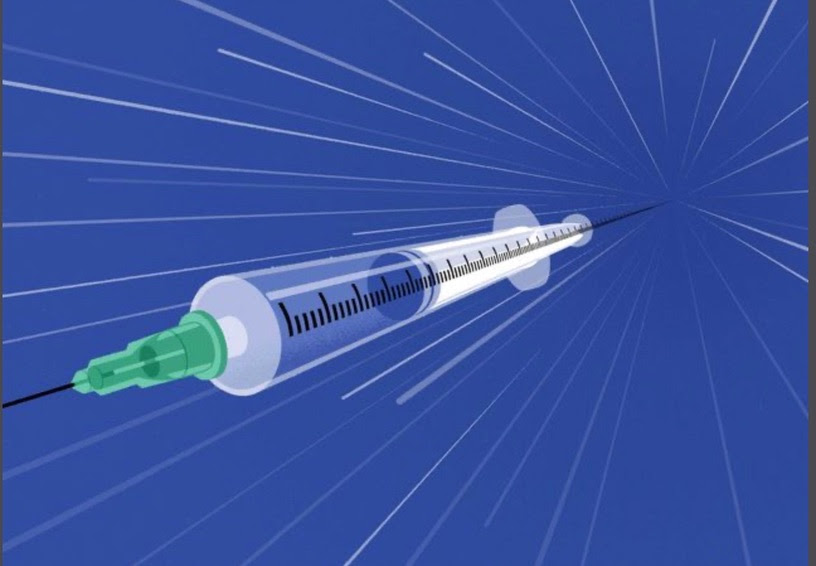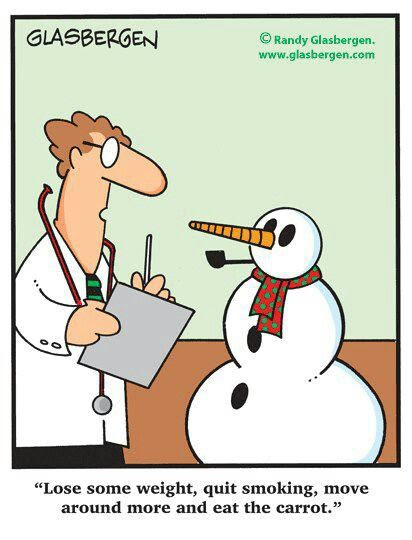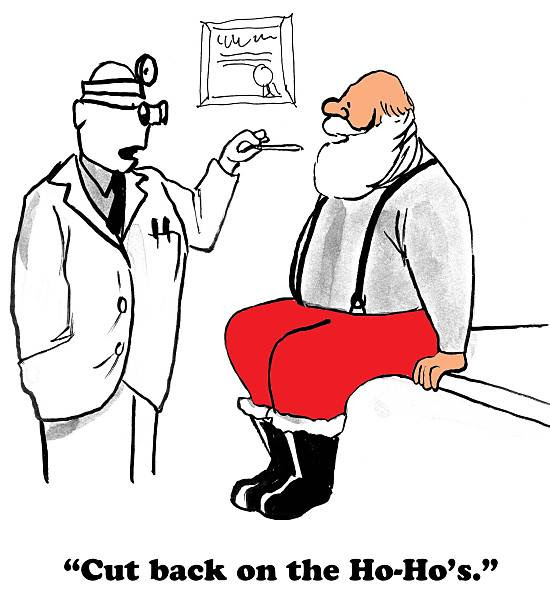Please call our office at 561-802-7999 to schedule your COVID-19 booster vaccination. The Moderna vaccine is available for both booster and initial series vaccinations.
Thank you to our patients for entrusting your care to Weisz Concierge Medical in 2021. Best Wishes for a happy and health holidays.

The Top Ten Medical Innovations of 2021
1. Gene therapy for hemoglobinopathies
What are hemoglobinopathies?
Hemoglobinopathies are genetic disorders that affect the structure or production of the hemoglobin molecule – the red protein responsible for transporting oxygen in the blood. An experimental gene therapy has been developed that should enable affected people to create functional hemoglobin molecules that will reduce the presence of sickle blood cells or red blood cells that are ineffective in cases of thalassaemia. In this way, it will be possible to prevent the complications associated with these disorders.
2. New drug for primary progressive multiple sclerosis
Multiple sclerosis (MS) is an autoimmune disease in which the immune system attacks the protective fatty myelin sheath that covers nerve fibres. A new therapeutic monoclonal antibody approved by the FDA with a novel target is the first and only treatment for MS in the primary-progressive MS population.
3. Smart pacemakers
Used to prevent or correct arrhythmias, pacemakers and defibrillators deliver electrical impulses to the chambers of the heart muscle to contract and pump blood to the body. Connecting these devices to an application available on patients’ smartphones will allow them to gain a better understanding of their cardiac treatment while transmitting valuable data to their doctors.
4. New drugs for cystic fibrosis
Cystic fibrosis, a hereditary disease that affects more than 30,000 people in the United States, is characterized by thick, sticky mucus that obstructs the airways and traps germs, leading to infections, inflammation and other health complications. A new combination of drugs approved by the FDA in October 2019 has proven to be effective in people with F508 del, the most common mutation in the CF gene, which accounts for approximately 90% of people with the disease.
5. Universal treatment of hepatitis C
Hepatitis C, described by the CDC as a “silent epidemic”, is one of the biggest public health concerns in the United States. A new FDA-approved treatment option, a fixed-dose combination of drugs, has been shown to be more than 90% effective in treating hepatitis C genotypes 1 to 6, which means that this new treatment is an effective option for a larger number of patients.
6. Non-invasive CPAP for improved lung function in premature babies
Premature babies are often exposed to a range of risks, particularly respiratory risks. Premature babies suffering from Infantile Respiratory Distress Syndrome (IRDS) are most often administered a surfactant during mechanical ventilation. Rather than applying constant pressure to the infant, b-CPAP applies oscillating pressure that reduces physical trauma while stimulating lung growth when administered over a long period of time.
7. The rise of telemedicine through new practices and policy changes
One of the challenges brought about by the pandemic has been the need to transform medical visits to ensure the safety of patients and doctors. This has been addressed by the increasing use of telemedicine. Recognizing the importance of these new tools, state and federal regulators have moved quickly to remove regulatory barriers to telemedicine.
8. Novel device for postpartum haemorrhage
Postpartum hemorrhage affects one to five per cent of women giving birth. Characterized by excessive bleeding after the birth of the child, the complication may require blood transfusions and the administration of drugs with dangerous side effects. The new approach to postpartum hemorrhage is vacuum-induced uterine tamponade. This method uses the negative pressure created inside the uterus to collapse the bleeding cavity, causing the muscle to close the vessels.
9. PARP inhibitors for prostate cancer
Over the past decade, progress has been made in the diagnosis and treatment of prostate cancer. With one in nine men diagnosed with the disease during his lifetime, it remains the second leading cause of cancer death among men in the United States.
Pharmacological inhibitors, known for their success in women’s cancer, block proteins called PARPs that help repair damaged tumour DNA in people with mutations in the BRCA1 and BRCA2 genes.
10. New medicines specifically targeting migraines
Usually treated with multi-purpose medications such as high blood pressure medication, antidepressants, anti-convulsion drugs and Botox injections, migraine attacks affect more than 38 million people in the United States, or 12% of the population. By blocking the activity of a molecule called calcitonin gene related peptide (CGRP), which reaches its peak during a migraine, this class of drugs is now approved by the FDA. Currently actively prescribed, this new class of drugs represents a major breakthrough in the treatment of migraines.
Source: HealthTech EU • October 15, 2020

Health Breakthroughs That Changed the Medical Landscape in 2021
Beyond the super-effective vaccines for COVID-19
Though the pandemic has turned the world upside down for nearly two years, it’s led to some amazing medical advances: We now have home COVID tests that give results in 15 minutes, so you can swab before visiting your elderly aunt or sending your child to school. New treatments are keeping people already infected with COVID-19 from getting dangerously ill. And of course the biggest news of all is that millions of Americans have rolled up their sleeves for one of three safe, highly effective vaccines, which the Yale School of Public Health estimates have already saved hundreds of thousands of American lives and kept more than a million people out of the hospital.
Ending surprise fees
Congress passed the No Surprises Act late last year, and it goes into effect this coming January. The law prohibits providers from billing consumers for the amount not covered by their insurance and gives providers the right to negotiate in both emergency and nonemergency cases (though ground ambulances are excluded). The nonprofit Families USA hails the legislation as a landmark step in the fight for health care consumers’ rights.
An easy way to detect early cancer
We hear all the time that early detection is the key to surviving cancer, but just a few tests (including Pap smears, mammograms, lung screenings, and colonoscopies) exist to catch cancer at its most curable stages. That’s why a new technology that screens a blood sample for DNA fragments from more than 50 types of cancer is generating great excitement. The Galleri test alerts your doctor if you have a signal for the disease and indicates which organ it comes from. This “liquid biopsy,” intended to supplement other available screening tools, is on a fast track to FDA approval, but you can get it now for $949 with a doctor’s Rx under a regulation covering lab- developed tests.
Helping the climate and our health
The way we power energy and transportation not only impacts the climate crisis but also affects our well-being, and new programs hope to improve both. Burning coal and natural gas spews soot, which can cause lung cancer and strokes; the nitrogen dioxide from tailpipes can trigger respiratory infections and asthma. An executive order signed earlier this year, along with proposed federal legislation, aims to clean up transportation and power generation—helping to save the planet, and lives.
A new way to test fertility
The new easy-to-use OOVA kit, backed by New York’s Mount Sinai Hospital, measures two hormones to better identify your “do it now” window. One, luteinizing hormone, rises before an egg is released; the second, progesterone, is triggered just after ovulation. Tracking both of them improves accuracy so it approaches the reliability of blood tests. An app on your phone reads each day’s test strip and clearly reveals the best time for you to get busy making a baby.
Affordable hearing aids
The White House has asked the Food and Drug Administration to write the needed rules to allow hearing aids to be sold directly to consumers. Expanding buying options is important, because our ears can help foster work success and a happy social life as well as keep us safe. Already some electronics companies have jumped into the DIY sound-amplification business, with Bose releasing its $850 SoundControl buds this year. More good news: Congress has proposed legislation allowing Medicare to finally start paying for both hearing aids and eyeglasses.
Movement on Alzheimer’s drugs—at last
This year we hit a milestone for new medicines for Alzheimer’s disease, the most common cause of dementia: Biogen’s Aduhelm became the first new drug approved by the FDA in nearly 20 years (though the approval remains controversial). And donanemab from Eli Lilly was granted Breakthrough Therapy status after a study in May’s New England Journal of Medicine found that people with early Alzheimer’s scored better on certain cognitive-function tests after a year and a half of monthly infusions than those who received a placebo.
Source: Prevention.com • Meryl Davids Landau • Nov 18, 2021

7 Medical Advances You May Have Missed
COVID-19 has been all-consuming. For nearly two years, the world has been focused on the race for vaccines, the pressures on providers, the best testing protocols, and simply staying safe. But medicine has been advancing in other areas as well. Below are seven medical advances that may not have grabbed your attention but could ultimately improve the lives of millions.
Rolling MRIs into hospital rooms
The Swoop MRI — which was created with input from Yale Medicine in New Haven, Connecticut — received Food and Drug Administration (FDA) approval in August 2020 and is already at work in several U.S. hospitals. The new portable machine offers many advantages over its massive cousin, says Yale neurologist Kevin Sheth, MD.
Swoop’s size — it’s smaller than some refrigerators — eliminates the need to move frail patients down hospital hallways. What’s more, its cost — around $100,000 compared to $1 million for the bigger machine — puts it within reach of hospitals and regions with fewer resources.
Zapping prostate cancer
A promising new approach has succeeded among men with an advanced form of prostate cancer whose condition had deteriorated despite receiving standard treatments. The treatment’s name is complex: lutetium-177-PSMA-617. But its approach is straightforward: Drive radiation directly into a cancer cell while sparing healthy tissue around it. In September, the FDA granted the treatment priority review status, according to drug manufacturer Novartis, which funded the study. An answer is expected in the first half of 2022.
Solving sickle cell disease
For a long time, the only cure has been a bone marrow transplant, but new gene-editing techniques now may offer a safe and effective alternative. In research conducted at Boston Children’s Hospital, scientists used a virus to switch off the gene that triggers cells’ sickling. The patients subsequently produced healthy red blood cells — and nearly all were able to discontinue the blood transfusions SCD often requires.
Saving mothers’ lives
When a woman’s uterus fails to contract after childbirth, tremendous blood loss can ensue, possibly leading to an emergency hysterectomy or even death. A new vacuum device aids natural post-birth contractions, putting pressure on leaking blood vessels. The FDA approved the device — the Jada vacuum uterine tamponade — in September 2020 following a 12-site research study. The vacuum controlled bleeding in a median of three minutes and successfully treated 94% of participants.
A reborn ACL
Tearing an anterior cruciate ligament (ACL) — the flexible band inside the knee that helps stabilize it — can upend a sports career and sideline weekend athletes. Between 100,000 and 200,000 ACL tears occur each year in the United States. In December 2020, the FDA approved the Bridge-Enhanced ACL Restoration (BEAR). The approach involves placing a protein-based sponge, prepared with some of the patient’s own blood, between the torn ACL ends. The blood promotes the connection of the two ACL pieces to the sponge and, ultimately, to each other.
A breakthrough obesity medication
For the first time since 2014, a new obesity medication has hit the market, offering hope to the 78 million Americans who face the many risks of excess weight: cancer, heart disease, diabetes, and complications from COVID-19, among others. A new medication — semaglutide, also known as Wegovy — is significantly more powerful than its predecessors, according to research that helped it garner approval from the FDA in June. Semaglutide recipients lost nearly 15% of their body weight on average — compared with 2.4% among controls, according to one study of nearly 2,000 patients.
The first blood test for Alzheimer’s disease
The test, developed by a company called C2N Diagnostics has been available to physicians since October 2020, when it received approval through a federal lab certification program. It now awaits additional approval from the FDA.
Source: AAMC.Org , Stacy Weiner, Senior Staff Writer November 17, 2021
A Dose of Humor




A Healthy Recipe for your Holiday Party
Recipe Notes: White chocolate can seize up or get lumpy and grainy if overheated. To avoid this, remove your bowl of chocolate from the heat source every so often and continue stirring — the residual heat may be enough to melt it completely. In this recipe, we use an easy tempering shortcut to help give the bark snap. If you skip it and melt all of your chocolate at one time, your bark will be more crumbly in texture.
Ingredients
- 1 pound dark chocolate, roughly chopped
- 2 teaspoons peppermint extract, divided
- 12 ounces white chocolate, roughly chopped
- 4 candy canes, crushed into small pieces
- Preparation
- Make the dark chocolate layer. Place 2/3 of the dark chocolate in a heat-proof bowl.
- Fill a small saucepan with an inch of water and bring to a boil. Reduce to a gentle simmer and place bowl of dark chocolate on top, making sure the bottom of the bowl does not touch the water. Stir frequently until the chocolate is completely melted.
- Remove from heat and add the rest of the chocolate a few pieces at a time, stirring until fully melted after each addition.
- If the chocolate gets too cold to melt the rest, place it over the hot water again for just a minute to rewarm it. Do not rush this step. When all the chocolate has been melted, stir in 1 teaspoon of the peppermint extract.
- Use a small offset spatula to spread the chocolate into an even layer in a quarter sheet pan (9×13) lined with parchment paper. Set aside to cool (you can also pop into the refrigerator to speed the cooling).
- Make the white chocolate layer. Repeat step 1, this time using the white chocolate.
- When the dark chocolate layer is almost set, spread the white chocolate evenly on top.
- Sprinkle the crushed peppermint on top and lightly press into the white chocolate.
- When the chocolate bark has completely cooled, break or slice into pieces. Store at room temperature in an airtight container for up to one week.
For details and more photos, go to: https://www.brit.co/diy-peppermint-bark/
Source: Brit+Co.com • Jessica Smith • December 11, 2018
